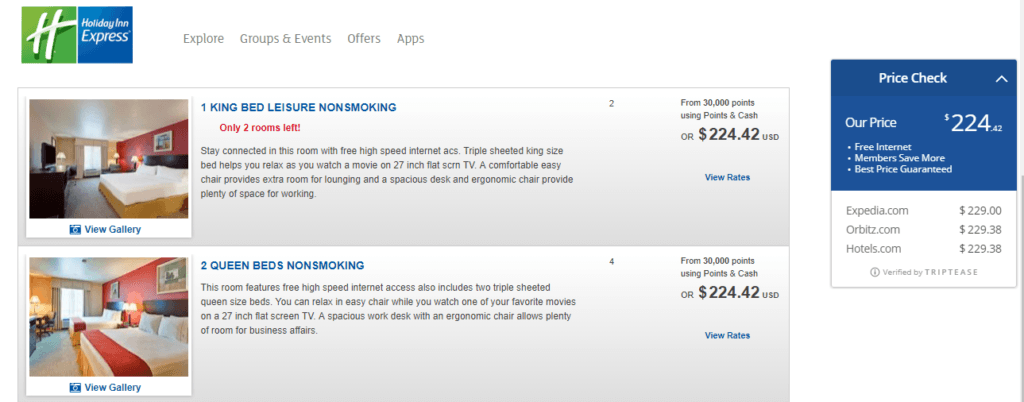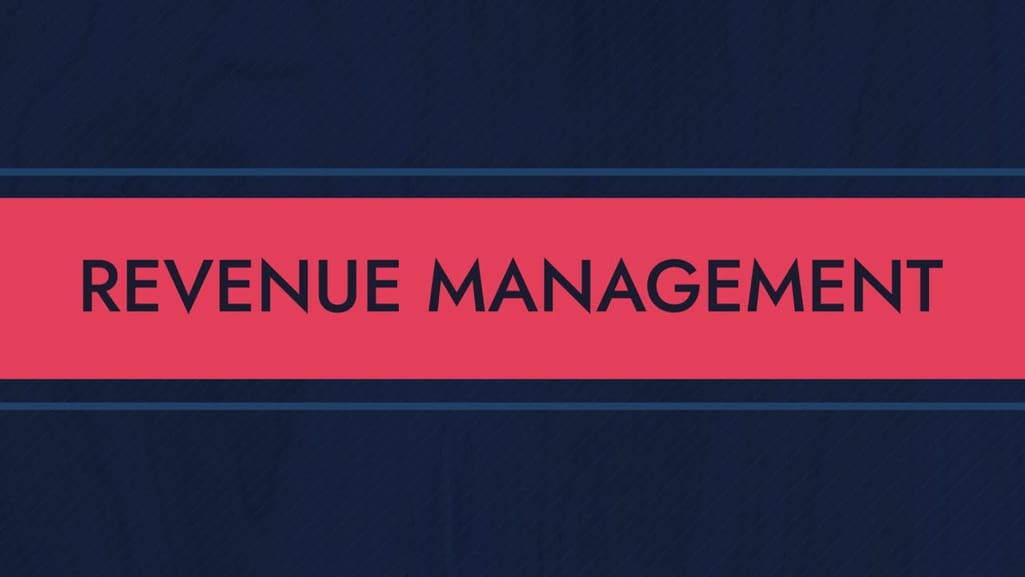For delivering a booking, an online travel agency (OTA) charges a hotel up to 30 percent commission. And 76 percent of online hotel bookings would pass through OTAs. This puts hotels on the losing end of the struggle for direct bookings with OTAs as the clear winners.
Today the largest OTA holdings – Booking Holdings (Booking.com, Priceline.com, Kayak, Momondo, etc.) and Expedia (Expedia.com, Hotel.com, Trivago, etc.) – dominate the online market allowing OTAs to dictate terms and conditions to hotels. For instance, since 2016, Booking.com discontinued providing hotels with customer emails preventing hotels from marketing directly to travelers.
Physical hotels will lose, unless they become digital businesses
Fair to say that hotels should focus their efforts on marketing and branding to increase customer loyalty, but there’s one big difference between modern OTAs and hotels. Online travel agencies, purely digital businesses, have embraced continuous technological change. Frankly, they were the ones designing digital transformation in travel in the first place. Hotels, on the other hand, still think brick and mortar, even those that struggle against OTA dominance.


More on the rivalry between OTAs and hotels
What does this mean? While tech savvy executives discuss big data and machine learning, chatbots and conversational interfaces, predictive analytics and mobile-first strategy, hotels may struggle with simple UX challenges that digital businesses have already figured out. So, let’s talk about both simple and more complex transformations that can be implemented right now to increase direct online bookings on your hotel website.
Integrate automatic language and currency selection
Predictably, 60 percent of international buyers rarely or never make a purchase on an English-only website. However, many hotel chains still don’t bother helping visitors from other countries book rooms directly from their sites. The solution is simple and transformative – enable automatic geolocation, and update language and currency based on customer location. In the race to personalization, a user’s location is the essential part of accurately targeting your content. Seeing familiar currency and content displayed in their native language will make your guests feel wanted on your website and willing to stay longer.
While Internet users are wary of sharing their personal data with websites, they readily give access to this type of data to e-commerce services. To automatically detect a visitor’s location and customize your website, you can use tools that ask for a client’s permission to identify their IP like this one by Google Developers. You also should ensure that your website is GDPR compliant. As there are increasingly more data administration rules and limitations, don’t overlook CCPA compliance as well.
To display prices in a client's currency, e-commerce businesses can use specific plugins. Auto Currency Switcher from Shopify, for instance, pulls out live conversion rates, remembers a user’s selection, and allows for UX customization. As for language customization – you don’t have to translate the website into all 6500 existing languages. But it absolutely makes sense to understand your customer base and create language localizations for each language group that makes up over 5-10% of your customers.
Embrace straightforward design
In our piece on user experience for travel websites, we mentioned the importance of simplicity and transparency in e-commerce. Moreover, no matter whether a user comes to browse, book, or just compare prices, the design should appeal to all types of needs and be as descriptive and straightforward as possible. Some of the techniques you can apply are:
- Use a minimalist front page design to attract visitors to the reservation field and eliminate distractions
- Display your hottest deals on the homepage and provide additional info via a link
- Include unambiguous calls-to-action to evoke emotion and highlight value
- Focus on customers and emphasize their experience instead of your personal benefits
- Provide an email address or a chat window for more personalized service
- Allow for filters based on budget, facilities, etc.
It’s important to imitate the casual and information-rich experience of most OTAs. Encourage users to take their time and have a look around, but recognize the importance of fast and instructive actions such as “check availability” or “book now”.
Integrate and highlight your booking engine
So you’ve caught a visitor’s eye with all the most compelling yet straightforward features. Now make sure you have a modern hotel-booking engine that will allow for a smooth booking experience. The booking engine should be optimized for all kinds of devices, be it desktop, tablet, or mobile. The recent study by Google and Deloitte showcased that even 0.1s site speed improvement can increase conversion rates by 10.1 percent for the travel industry.
Your booking engine should play a pivotal role in achieving a smooth booking process for visitors. Smooth booking usually entails displaying all room types and rates and fetching all data from a hotel property management system via the channel manager. Get greater detail on how a hotel booking engine works in our related article.
Showcase additional features
OTAs are used to bombarding visitors with information about the viewed option. Don’t be afraid to do the same. By displaying how many people have booked or viewed the room in the last 24 hours, comparing prices, and highlighting availability, you create urgency to encourage visitors to be more decisive and book immediately.
Types of information you can include about provided options:
- Closeness to attractions, city center, public transportation
- Rating/number of reviews
- Number of times this room was booked in the last 7 days
- Number of available rooms for chosen dates

Moreover, from a usability perspective, a user shouldn’t have to drill deep into the site to view rooms. Conduct usability testing to find out how easily visitors can discover a desired feature. If a user has to go through two different menus or a long, complicated form to see your prices and utilities, the tiresome booking process becomes even more tedious and upsetting.
Leverage data
“Everything you see in Booking.com has gone through an experiment, otherwise it would not be live. Everything we do we test. We have been extremely focused on data and customers – from the start of Booking.com we have been learning about what customers want and doing a lot of experimentation over what the customer likes.”
Gillian Tans, CEO at Booking.com, on why data is the future of e-commerce
Don’t underestimate the power of data. Not only does it allow you to assess your performance and tweak the operational process, it also gives you valuable insight into the minds of customers to help improve personalization.
What kind of data can benefit your hotel business?
- Segments of travelers that visit most often (business, leisure, families)
- Visit dates (weekends, summer, festival season)
- How far in advance they’re booking
- Where they come from (both regions and channels)
- Length of stay
- Preferred services and priorities (parking lot, swimming pool, meals that are included in the cost of accommodation)
Now, how can you utilize this information to boost direct online bookings?
Personalize content and deliver it through the right channels. By defining your target audiences and their preferences, you can adjust your marketing strategy and specify room search results.
Tailor services to different customer segments. By knowing your visitors’ purchase behavior, you can attract the valuable segments with appealing service packages or discounts displayed on a homepage.
Improve loyalty programs for high-value customers. Data will also help you predict which customers are more willing to pay for additional services and how to reward them and motivate them to stay again.
Predict occupancy on certain dates and inform visitors. By knowing which months or weekdays are the busiest for your area, you can inform customers about the possible lack of rooms and prompt them to book in advance.
Use APIs and widgets
Application programming interfaces (APIs) and widgets allow hospitality brands to instantly improve customer experience without writing more code. Be sure to check out our showcase of travel and booking APIs to learn about the available options in detail.
According to Statistic Brain, 49 percent of travelers won’t book a room without first reading reviews. If you want to know how to encourage customers to leave reviews on your website, you can find it out in our article about user-generated content.
However, even if your hotel provides an exceptional online booking experience, chances are your customers will go looking for reviews on external sources. An API and widgets from TripAdvisor allow hotels to easily leverage the rating and reviews from popular websites.
Another useful widget is Price Check. It displays the real-time OTA prices on your website proving to visitors that they benefit by booking directly.
Additionally, you can use widgets for local weather, interactive sightseeing planners, or even surveys and quizzes. And if you can’t find the right application, you can always employ developers to create your own.
Deliver a sense of safety
Whether you are reading this article during the height of the COVID-19 pandemic or after your region has seen the worst of it, it’s crucial to inform your visitors via the website of steps your hotel takes to protect them. Especially given the fact that some of these measures may stay with us long after the initial coronavirus outbreaks.
Of course, the WHO has provided universal guidelines for the hospitality industry. The American Hotel and Lodging Association has also published its Safety Stay Guidelines in response to COVID-19 and you should adhere to them. But to display customer care, publishing data on reduced occupancy, regular disinfection, a 24-hour buffer between guests, digital keys, and virtual check-in is a good start. Along with that, inform your guests about closed spas, pools, children’s clubs, and buffets. Also, it’s highly recommended to notify your guests of room service availability to avoid overcrowding in dining rooms during meals.
Safety is a matter of the cooperation of two parties. Introduce information on how guests should behave while staying in your hotel during the world pandemic. While wearing masks and social distancing in common places such as lobbies, dining rooms, and lounging areas are the new normal, encourage your guests to use stairs instead of elevators.
Integrate with metasearch engines
One of the ultimate ways to increase direct hotel bookings aside from OTAs is connecting to metasearch engines.
Basically, metasearch engine is one that aggregates various hotel rates and availability from other websites and consolidates all results in one place. A metasearch engine strengthens your online presence and drives your direct bookings as it doesn’t sell your inventory, unlike OTA.
One more thing you should know is that metasearch engines can work with hotels on different models.
The pay-per-impression (PPM) model charges a business a certain price for an agreed-to number of impressions (e.g. how many people see the advertisement), working better for your brand awareness and online visibility. Albeit cheaper, PPM doesn’t guarantee increased revenue as there’s no certainty that everyone seeing an ad will click and book from you.
The pay-per-click (PPC) model suggests that a hotel pays for the placed ad when it’s only clicked. Although it might seem more expensive than PPM, it works well in the long run as the clicking, in most cases, may more likely lead to conversion, booking, and profit.
Major metasearch engines like Google Hotel Ads, TripAdvisor, and Trivago work on the pay-per-click model. However, the first two suggest instant booking, which may prevent users from booking directly from the website. If a customer booked on the metasearch engine, the hotel is charged a commission.
Let’s now address the most popular metasearch engines.
Google Hotel Ads. As the brainchild of the largest search engine, Google Hotel Ads uses all its advantages. Since Google remains the starting point for travelers searching for accommodations, it may become the key hotel metasearch engine and generate a lion’s share of traffic. Being listed in Google Hotel will enable hotels to be displayed in relevant search results and at Google maps. Learn the registration details.
TripAdvisor, initially a travel review website still operating as one, later started developing as a metasearch engine as well. Covering a wide range of travel products including hotels, TripAdvisor allows users to monitor reviews and compare prices on the platform right off the shelf. Similar to Google Hotel Ads, it mostly works on the pay-per-click model. You can get more detailed information on being listed.
Trivago, part of Expedia Group, runs in over 50 markets worldwide. It functions as a hotel price comparison platform and is one of the biggest hotel metasearch engines globally, including comparisons from over a million hotels and more than 250 assorted worldwide booking platforms. Trivago works on the pay-per-click model. The details being listed are also available.
Inform your visitors that they can benefit from booking directly from your website. And, it shouldn’t be just a marketing trick. Instead, develop a full-fledged loyalty program with tangible rewards and scale it according to your business size.
For instance, if your small, independent hotel’s client base is not large, you can reward your repeated visitors every time they book directly from your website. Here, small bonuses such as special rates or perks like welcoming drinks are a good option. You can also opt for social media as a reward platform. For instance, offering customers a welcome drink or free breakfast in bed when they take selfies and tag them with your place after their first stay would be a nice touch.
For a midsized hotel business, the variety of offers might be wider, consisting of additional features that are not included in regular hotel service. In this case, free wi-fi, free parking, late checkout, discounts, or even extra nights when booking X nights are the rule of thumb.
Large chain hotels attract and retain clientele more with the experience than the price. And as you might imagine, they have more complex loyalty programs. For instance, mammoths like Hilton would gather all a guest’s daily rates and extras not included in daily rates, convert them into points (just like flights into miles in aviation), and then turn them into tangible rewards like free nights, discounts, and special value-added services. Also notable is that large hotel chains are encouraging maximum loyalty during the COVID-19 world pandemic by extending guest vouchers and credit card points till the end of 2020 or even 2021.
Invest in revenue management
If you experience overbooking but still see small to no profit, it’s time to think of employing hotel revenue management practices.
There’s little doubt that efficient hotel revenue management may later contribute to predicting real-time customer demand on your market and adopting price and availability according to current customer needs. Simply said, selling the right room to the right customer at the right time at the right price.
Hotel revenue management consists of four interrelated parts:
- Customer segmentation - this suggests breaking down the guests by demographic criteria like age, gender, marital status, trip purpose, spending habits, or interests. The status of a visitor, whether they are a new or returning one, is also included. It allows for transmitting the right marketing message to the right target audience and finding the appropriate price for different segments.
- Demand forecasting - activities at this stage include the analysis of information about past demand across all customer segments. Historical data enables predicting demand rise and fall, setting prices, building promotion campaigns to attract more guests, or launching other marketing activities.
- Yield management focuses on determining the best price to sell a product at a maximum profit. The concept of yield management is narrowed down to the price and a volume of sales.
- Dynamic pricing, the last stage, enables businesses to adjust the price according to market demand. Dynamic pricing strategies are based on selling the property for the best price possible. The strategies are shaped by demand, supply, external data (competitors’ prices, weather data, and booking patterns), and internal data (segmentation, customer profiles, rates, etc.).
We now have a video on this topic. Watch it to learn about revenue management models, metrics, and more.


Revenue Management: The science of ultimate hotel success
Embrace the OTA
These tips are aimed at helping you drive customers back to your website and putting the odds in your favor in the struggle with OTAs for direct booking. You can grow your social and OTA presence with masterfully created content by adopting technology and maintaining clear communication with clients, remembering the need to be mobile-friendly and active on social media.Generally, a user-centered approach is what makes you grow as a business and a service provider. Be sure that any changes you make in both the real and digital world anticipate and resolve a customer’s concerns, and on a global level – make their job easier.

Maryna is a passionate writer with a talent for simplifying complex topics for readers of all backgrounds. With 7 years of experience writing about travel technology, she is well-versed in the field. Outside of her professional writing, she enjoys reading, video games, and fashion.
Want to write an article for our blog? Read our requirements and guidelines to become a contributor.

